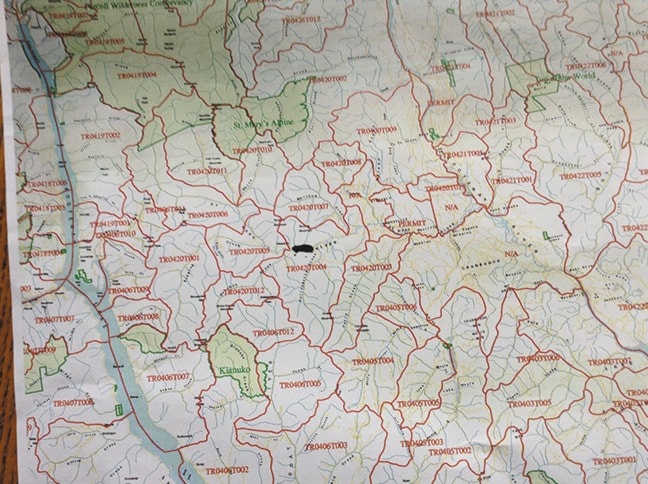It has now been a little over a week since Rosie — a Shepherd/Husky cross owned by the Fraser family at St. Mary Lake — was injured after being caught around her neck in a Conibear trap while out for a run with owner Shannon Fraser.
Shannon, husband Ken and a Conservation Officer were able to free Rosie, but not before the dog spent considerable time trapped and unable to move.
“The good news is Rosie is recovering and there doesn’t seem to be any serious complications,” said Shannon on Wednesday. “The nerve damage to her eye is healing, and she’s a little playful now. It’s been a long week since this incident, and we’re so thankful she survived.”
Like many people who go through a traumatic experience, Shannon has found herself wanting to know more about why it happened, and also wanting to inform the public so others don’t have the same thing happen to their dogs.
She has researched trapping policies, the traps themselves and more.
One thing she has learned is that the trapper himself did nothing wrong.
“The conservation officer informed us that the trapper had met all trapping standards and no violations had occurred.”
However, Shannon believes this indicates that a change in trapping policy is required. She says she has talked to a number of people about what happened to Rosie and received a lot of feedback ever since her story appeared in the Bulletin/Townsman last week.
“The feedback we’ve received from people is joy, that Rosie is alive; sickened by what we all went through; and disbelief that trapping is still occurring. Many people said they thought traps had been banned years ago.”
Shannon says that the changes that she, and most people she has talked to, want to see are as follows:
- signage, make it mandatory that all active traplines have signage posted near the trapline so the public is aware.
- Communication to the public from the Trappers Assoc, as to when and where these active traps are located.
- Increase the distance of placement of traps from roads
- Increase the distance of placement of traplines from residences, ie: 10 - 15 km from homes
- Establish and inform the public of “Trap Free Areas for Safe Recreation”
- Decrease the time required for trappers to check their traps. The conibear trap isn’t required to be checked for 14 days.
Shannon says that there is plenty of information available about the various traps used in the wilderness and everyone who takes their dog walking in the backcountry should familiarize themselves with the types of traps and how to release them.
“Rosie was caught around her neck in a Conibear trap,” she said. “It’s designed to break the necks of animals. Other dogs have been trapped in them as well, but I think Rosie may be the only dog to survive one. The trap has 90 lbs of pressure when released and is held closed by large springs on each side. I urge everyone to Google this trap and learn how to release it should this occur with your dog. The tools needed to release the trap are thin strong rope or strong shoelaces — something we should all carry when out in the forests.”
She also urges letter writing to associations, ministries, MLAs in order to perhaps get some movement on trapline regulations.
Shannon discovered the map (left) showing traplines in B.C.
“Apparently all crown land in the whole province is covered with traplines,” she said. “This map speaks for itself. There’s a website called: iMapBC 2.0, when you get into the site,find “Navigation” tab, click on “Add dataBC layers” and type in “traplines” to view our provinces traplines.”
With Rosie on the way to recovery the Frasers are grateful for the support they received.
“Thank you everyone for your caring messages and prayers.”
And one final bit of advice.
“If your dog goes missing, there’s a good chance it could be in a trap somewhere. Don’t leave the area but go looking, it could save your pet’s life.”
